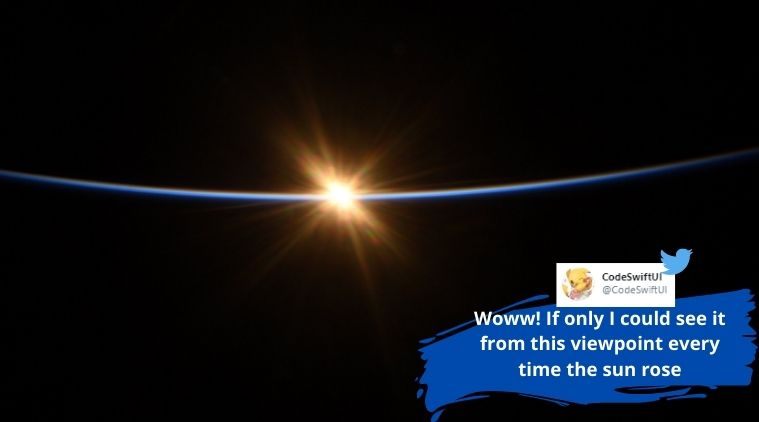NASA astronaut shares stunning photos of sunrise on the space station
The International Space Station (ISS) orbits the Earth every 90 minutes and sees 16 sunrises a day.
 In a series of pictures, NASA astronaut Bob Behnken captured breathtaking first moment of a sunrise as seen from space. (Twitter/ Bob Behnken)
In a series of pictures, NASA astronaut Bob Behnken captured breathtaking first moment of a sunrise as seen from space. (Twitter/ Bob Behnken)
After sharing a breathtaking video of what lightning looks like from space, NASA astronaut Bob Behnken has now shared pictures of what a sunrise looks like.
In a series of pictures, the astronaut has captured breathtaking images of what a sunrise looks like in space.
First moments of sunrise from @Space_Station. pic.twitter.com/jF1AXea4N4
— Bob Behnken (@AstroBehnken) July 27, 2020
Since being shared, the post has received over 58,000 likes with more than 90,000 people reacting to it. Here’s how people reacted:
Nice pictures I always wondered how it was sunrise for you guys on space
— Rafael Maria (@rafasm_oficial) July 27, 2020
That is amazing. Not a visible star. Just a sliver of light in the abyss of darkness.
— Nanc Branch (@BranchNanc) July 27, 2020
astronauts get to enjoy their morning coffee several times each day. 😎
— Gdiddy (@gnelson19561) July 27, 2020
wow beautiful photos bob i wish you and Doug a safe return to earth i will be watching live
— Emily rebecca (@Emilyrebecca11) July 27, 2020
Bob, I think you should stay up there for a very long time and send us amazing picture like these. You are truly a gifted photographer on top of everything else you do up there. We appreciate you.
— Kouros (@KourosMohit) July 27, 2020
Not one star in space. Amazing!
— 🐻 hcir erp (@King960084197) July 27, 2020
— Audrey Rose (@MrsARose1) July 27, 2020
Thanks for the sharing. Amazing and nice pictures as always. I discovered the earth from the ISS with our French local @Thom_astro . Great time over our beautiful home.
— matt vandersson (@VanderssonMatt) July 27, 2020
Totally awesome and better than my view. On earth😷. I would say stay as long as you can to see God’s great big world but I know the family and team members on earth are missing you; so, safe flight back and thanks for sharing science and God’s world.
— E. Smith (@Erv461) July 28, 2020
The International Space Station (ISS) orbits the Earth every 90 minutes and sees 16 sunrises a day.
Behnken, along with Doug Hurley travelled to the ISS in SpaceX’s first manned flight in May. They are expected to return to Earth on August 2, spending two months in space.



- 01
- 02
- 03
- 04
- 05




























